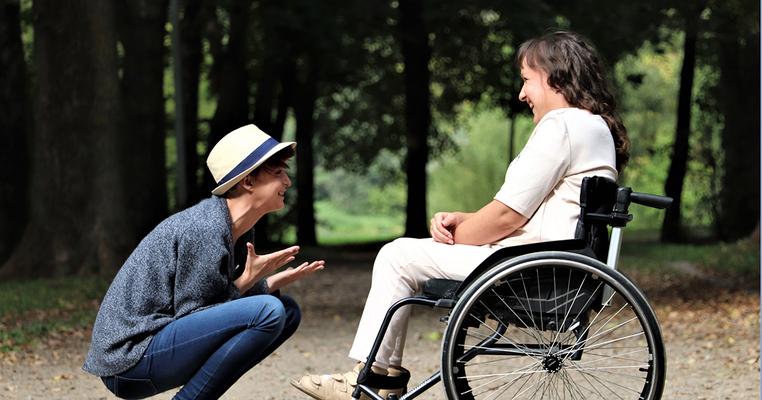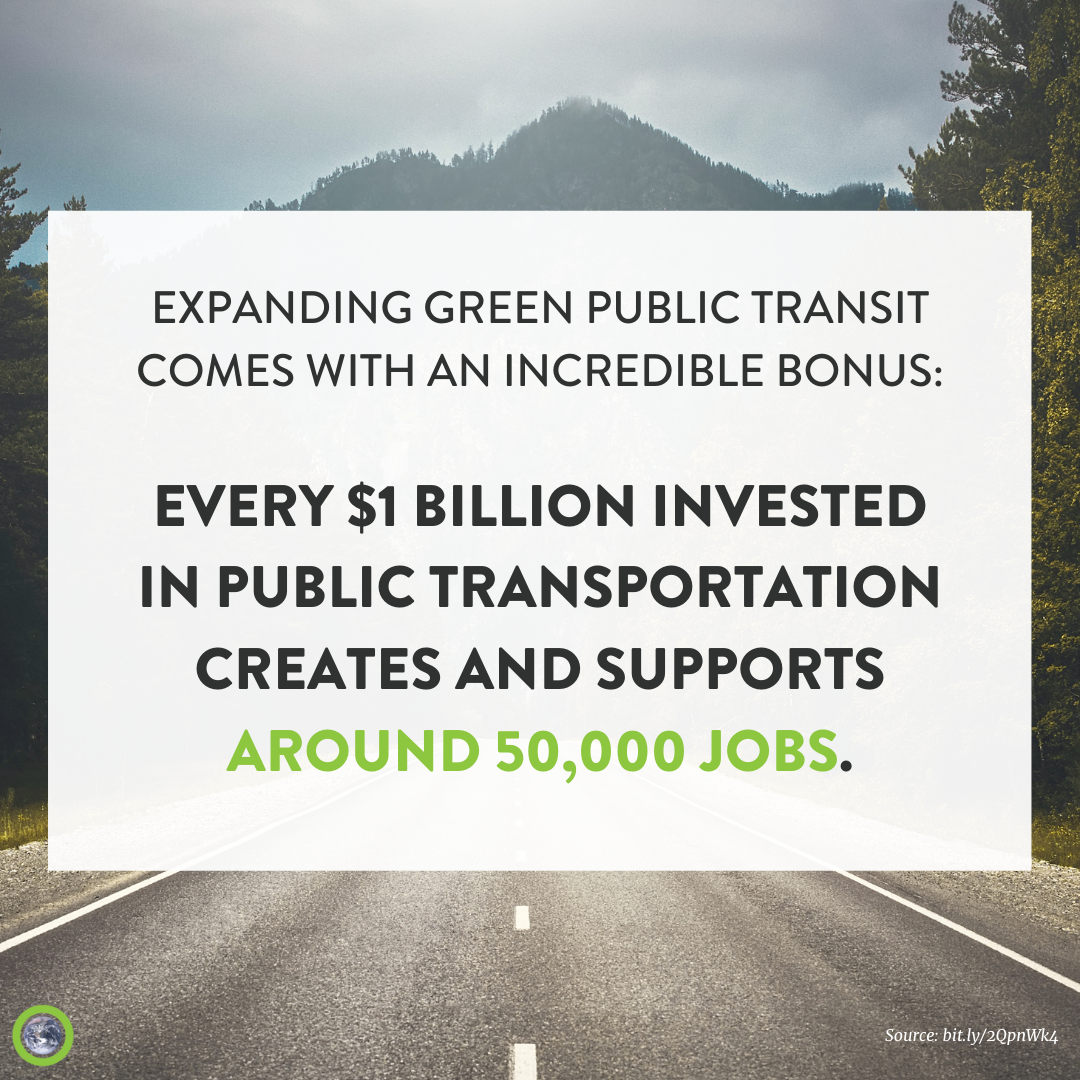
Disability and the Climate Crisis
The climate crisis is a threat to human health all around the world.
From dangerous prolonged heat waves and powerful extreme weather events to devastating wildfires and the spread of many infectious diseases, climate change will continue to exacerbate existing threats to health and give rise to new ones. Addressing the crisis’ impacts on our current and future well-being is not a political issue, but a moral and practical one.
The imperative to act urgently and boldly on climate is often most acute in the marginalized communities that see the effects of global temperature rise first and worst. Communities of color. Low-income families. Indigenous tribes. And the disabled, a group too often left entirely out of the climate conversation.
“Climate extremes like prolonged heat and cold waves, high humidity, flash flooding, and power outages are extremely problematic for somebody with my intense medical needs,” said Rachel Schmucker, 38, of Chambersburg, Pennsylvania.
Unique Medical Concerns
 Rachel (right) was born with a category of muscular dystrophy classified as a congenital myopathy, causing problems with the tone and contraction of skeletal muscles, which control voluntary movements and can cause severe general muscle weakness that complicates basic activities like walking, lifting, dressing, bathing, swallowing, and even breathing. Congenital (present at birth) myopathies have a genetic basis, meaning they can be passed from parent to child.
Rachel (right) was born with a category of muscular dystrophy classified as a congenital myopathy, causing problems with the tone and contraction of skeletal muscles, which control voluntary movements and can cause severe general muscle weakness that complicates basic activities like walking, lifting, dressing, bathing, swallowing, and even breathing. Congenital (present at birth) myopathies have a genetic basis, meaning they can be passed from parent to child.
Secondary to this diagnosis, Rachel also has severe restrictive pulmonary disease and respiratory failure caused by the weakness of her skeletal muscles and scoliosis, which means that she cannot breathe adequately on her own and has to rely on several types of ventilators and respiratory devices to survive.
She uses an electric wheelchair full-time, and requires personal care services for all activities of daily living.
For Rachel, the threat of climate change-exacerbated extreme weather and related power outages are life-threatening. Right now.
>> Fight for What Matters: Where We’re Going and How We Get There Together <<
When the Power Goes Out
“Because every single medical device I rely on for survival is either directly powered by electricity or runs on internal batteries that need to be recharged daily, threats of flash flooding are terrifying because any amount of water would immediately destroy all of this equipment, which costs tens of thousands of dollars per device, and power outages would render them either useless or in danger of draining the batteries until a suitable power source to rechange them is found,” she explained.
Rachel relies on a mouthpiece ventilator during the day to help her take deeper, more adequate breaths and uses a machine called a CoughAssist because her cough is not strong enough to clear her airways independently. And every night since she was 10 years old, she has slept in a Porta-Lung, a modern interpretation of an iron lung that breathes for her at night, allowing her body to rest and recharge.
She requires daily personal care services, and climate extremes like severe winter weather and flooding can impact her access to this essential help.
“If roadways or transportation are impacted and my attendants are not able to come to work,” she added, “I am unable to even get out of bed, eat, or use the bathroom.”
Rising global temperatures are themselves a constant concern in Rachel’s life. Prolonged heat and humidity are particularly hard on her respiratory system, meaning she must have available access to temperature-controlled environments if breathing becomes too difficult.
She is also extremely sensitive to air pollution.
Air Pollution
Rising global temperatures decrease air quality, in part, by increasing the formation of ground-level ozone, the main constituent in city smog. Exposure to high levels of ozone can lead to shortness of breath, wheezing and coughing, chest pain, and temporary decreases in lung function in even the healthiest of people.
“During times of excessive heat, air pollution and smog also complicate my breathing and there have been times, particularly when I lived in New York and Pittsburgh,” she continued, “where I would need to avoid being outside when air quality was especially poor.”
Rachel feels fortunate that she has been able to find manageable ways to so far adapt to our changing climate, but the concern is never far from her mind, especially when it comes to where she is able to live.
“I am always mindful of choosing to live in locations that offer reliable power grids, extremely close hospitals and emergency medical services, and access to major roadways in case I need to evacuate or so that I can be rescued more easily,” she said.
“I have also recently begun researching generators to be used if I lose electricity for more than a few hours due to the annual nor’easters Pennsylvania has been experiencing these past years, so that I can at minimum keep my wheelchair charged and at least one or two of my respiratory aids working. I also have had to reconsider future plans of moving south to a more coastal region – because flooding, which is not an active threat where I currently live, would be an ongoing, increasing threat to my safety.”
Leaders Need to Act
Asked what elected leaders can do to better serve their disabled constituents, Rachel minced no words.
“Elected officials often seem to overlook the disability community in almost every way,” she said. “In terms of climate change, they need to be developing systems to locate, contact, rescue, and evacuate vulnerable citizens in case of climate emergencies – or all emergencies, actually.”
According to Rachel, widespread and accessible public transportation is vital to keeping disabled people safe in times of crisis.
“[Elected leaders] also should be looking at ways to improve access to transportation for persons with disabilities. It is extremely frustrating to find adequate, accessible public transportation outside urban areas, and even then seating is limited or the service times do not meet the 24/7 needs of the community, often requiring us to own a vehicle, live within walking distance of daily needs, or not leave our home,” she said.
“Public transit is also vital for the people who assist us in our day-to-day lives. Many personal care attendants and homecare workers rely on public transportation, particularly in the city. So when I have lived in these areas, I’ve often had to readjust the hours they can work that still align with the bus or subway system. In rural areas without a public option, often climate and weather-related emergencies that would impede travel results in missed shifts and lack of care.”

Share this graphic now: [Instagram] [Facebook] [Twitter]
Fight For What Matters Most
When the world gets warmer, the results impact real people’s lives. It’s a truth that too often gets lost amid data points and science jargon, late-breaking news, and heated political handwringing. But we must not let it.
Real people are suffering right now because of our changing climate. And some of us are unfairly impacted more than others.
Fighting the climate crisis means fighting for the health and well-being of every person on the planet today—as well as those who will join us in the future.
It’s good news then, in the US, that we now have a president who has a plan not just for facing the climate crisis, but confronting the injustices poisoning this country and rebuilding America with green jobs and clean energy.
We have a Congress with enough members on board with the president’s plan and committed to action that we could see bold legislation launching a just recovery for the nation and putting us on the path to a better, more-sustainable future.
A future that includes expanded access to the clean public transportation that, as Rachel explained above, is so essential to the health, well-being, and safety of people with disabilities.
Learn more about how to advocate at the federal level for increased public transit funding and so much more by downloading our latest e-book, Where We’re Going and How We Get There Together.
In this free downloadable PDF, you’ll discover the key policy solutions that Climate Reality believes can help the people who need it most right now while carrying the United States to a net-zero carbon pollution economy by 2050 – and how you can help us get there!

